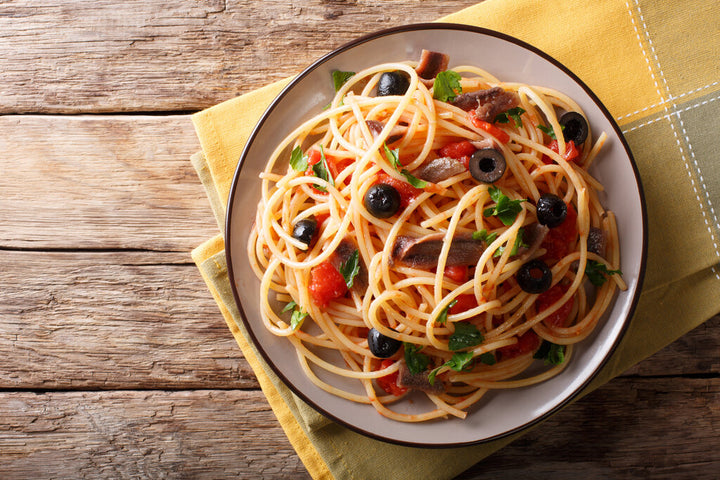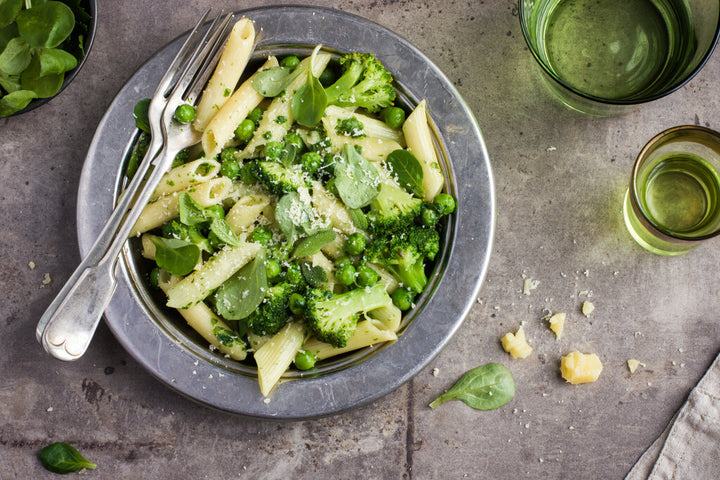There's nothing quite like slicing into a thick serving of a traditional, Italian-style lasagna that's crispy on top but oozing creamy, cheesy, tomato sauce from its core!
For those of you with love for Italian food (and let's face it, who doesn't love Italian food,) then lasagna is just pure comfort food. Our traditional lasagna recipe is cheesy, and it's creamy. Layer the ground beef and pork sausage, put the pasta press into action if you're making your own homemade pasta, and ready the tomato sauce!
Traditional Italian lasagna recipe FAQ
Our traditional lasagna recipe is a classic mix of delicious pasta, meaty-sauce, and multiple flavors of cheese. It might seem like a slightly daunting recipe to put together, but it's simple enough once you have all the ingredients gathered together, and you start preparing the lasagna!
But just in case you had more questions about our traditional lasagna recipe, we've put together these quick FAQs to answer the most common questions we often receive.
What exactly is 'traditional lasagna'?
We've been talking a lot about 'traditional lasagna,' but you might be wondering what actually makes lasagna traditional. The truth is that lasagna is a complicated recipe that can take many different shapes and forms, not only in its home country Italy but across the world too.
Our traditional recipe tries to stay faithful to the Italian classics, but we understand that recipes also vary tremendously from one region to the next, even within Italy.
The traditional lasagna dishes of Naples, for instance, are known for their layers of sausage, mixed with meatballs, ricotta cheese, mozzarella cheese, a meat ragu sauce, and even a few boiled eggs.
Our recipe is closer to the traditional dishes of the Emilia-Romagna area of Italy, which is well known for its Lasagna al Forno. This has a thick, meat ragu sauce that mixes delightfully with a Bechamel sauce.
Recipes vary, as you can see, but any traditional lasagna will have some combination of ricotta cheese, mozzarella cheese, and tomato sauce, which will be cooked with meats and vegetables, before being baked 'al Forno' (which means baked in the oven).
Can I prepare a vegetarian lasagna?
While Italian lasagna traditionally uses ground beef, pork sausage, and other meats, this classic dish is also very easy to turn into a vegetarian-friendly meal. Take out the beef and pork, and use a meat substitute such as Quorn mince, tofu, or jackfruit, to keep a similar taste and texture.
Alternatively, you can simply add in a beautiful range of nutritious vegetables instead of meat or a meat substitute. Add in fresh mushrooms, bell peppers, zucchini, carrots, and many more delightful vegetarian-friendly ingredients to the recipe.
Make sure you soften up your vegetables in a skillet before you mix them up into the lasagna sauce (just as you would brown your meat before adding it to the sauce).
Do I have to make homemade pasta?
We always suggest making homemade pasta to go with this traditional lasagna recipe. Although it takes more time, and it can take a few goes to get the dough mixture and kneading right, it's worth investing energy into learning how to make pasta by hand.
Homemade pasta is tastier, healthier, and much more traditional (this is how Italian Grandmas make their pasta!) In making the pasta yourself, you know what ingredients are used. You know there aren't any unnecessary additives or preservatives.
But we understand you can make this traditional lasagna recipe easy and much less time-consuming simply by using store-bought, dried pasta sheets. It's a lot easier, but it's not quite as authentic, and definitely not as traditional!
If you do attempt making your own pasta for lasagna, we suggest following our gluten-free or traditional lasagna noodles recipe.
Can I make lasagna ahead of time?
Absolutely! You can make the base the night before or in the morning, and simply keep it in the fridge until you're ready to bake on the days you don't plan on having as much time to spend preparing the entire dish at once.
We suggest cooking up the meat and tomato sauce, mixing up the cheeses, and, if you're making your own, making the pasta ahead of time. You can leave everything separate and layer up the dish later, or you can layer up the lasagna and leave the whole dish in the fridge until you're ready to bake if you have enough space.
Can I freeze lasagna?
If you have any leftovers from the meal, you can easily put them in the freezer for up to 6 months. Lasagna freezes particularly well, and if you reheat it slowly at a later date, it will still taste much the same.
Once the lasagna has cooled down, place the leftovers in a resealable container or a ziplock bag, and leave them in the freezer. We also recommend slicing the leftovers up into nicely-sized individual portions that you can thaw one by one.
When you're ready for another round of traditional lasagna, thaw the leftovers on the side before reheating them. If you're in a hurry, defrost them on low power in the microwave.
You can reheat the portions of lasagna in the microwave or the oven. Reheat the lasagna on low heat or low power to ensure that it heats evenly and all the way through.
What pairs well with this classic lasagna?
If you're looking to add a side dish to this well-rounded recipe, our chefs recommend pairing our classic lasagna recipe with ricotta cheese with a light and fresh green salad. Throw some green beans into the oven alongside the lasagna, and enjoy a warm side of buttery and delicious veggies.
Or if those don't suit you, bake a side of cheesy garlic bread to add to this hearty meal.
Traditional Italian - style lasagna takeaways
That's it for our deliciously traditional lasagna recipe. This authentic recipe is guaranteed to transport you to the rural idylls of the Italian countryside for a taste of home-style cooking! Why not bookmark our classic lasagna recipe and save it for the next time you're craving hearty, cheesy, Italian-inspired food?
Leave a comment
Comments will be approved before showing up.
Also in Recipes










